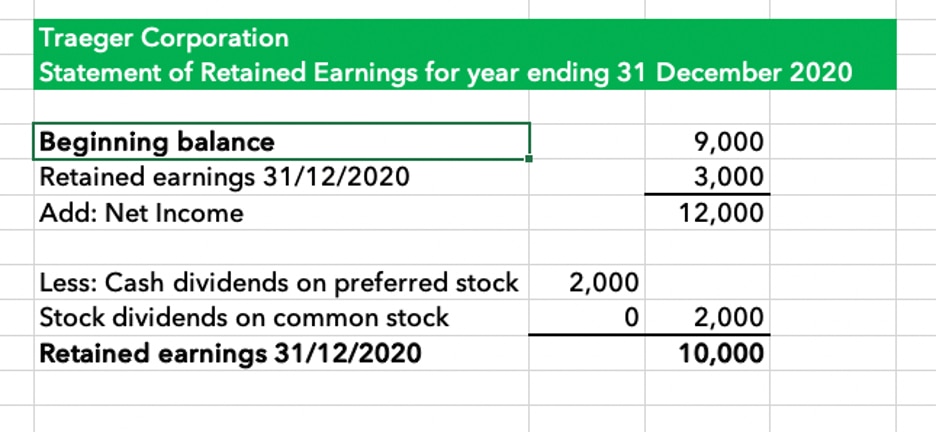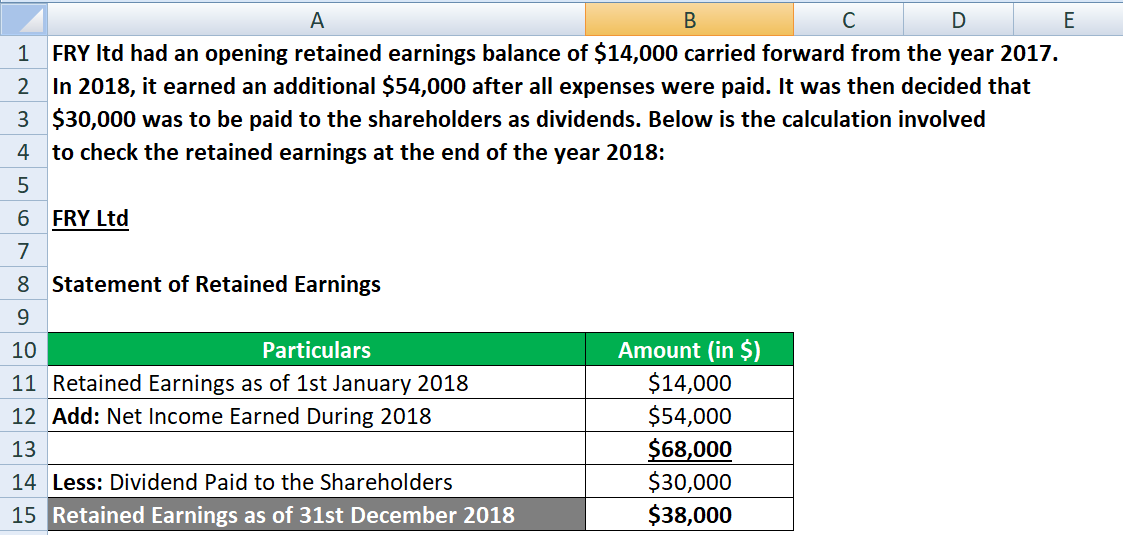
Our mission is to empower readers with the most factual and reliable financial information possible to help them make informed decisions for their individual needs. When a prior period adjustment is used, it appears as a correction of the beginning balance of RE and is fully described. With the relative infrequency of material errors, the use of this type of adjustment has been virtually eliminated.
Steps To Follow
- Retained earnings serve as a link between the balance sheet and the income statement.
- This bottom line is not mere scribbles in a ledger; it’s the quantitative measure of Widget Inc.’s fiscal discipline and its strategic dexterity.
- Begin by defining the assumptions and drivers that will influence the model.
- The other is an action on the part of the board of directors to increase paid-in capital by reducing RE.
Retained earnings are primarily used for reinvestment into the company, funding new projects, R&D, expansion, reducing debts, or as a reserve for future opportunities or unexpected expenses. Conversely, cash on hand is the literal liquid assets—currency, bank account balances, easily accessible funds—that a company can quickly mobilize for immediate needs, emergencies, or opportunities. To ensure you have a crystal-clear understanding of the retained earnings calculation process, let’s walk through Zippy Tech’s example, step by step. Calculating the ending retained earnings isn’t just a mere formality—it’s a powerful indicator of economic endurance and fiscal foresight. It’s the residue of past gains, standing ready to fuel future expansions, innovations, or even outlast tough times.
What Is the Relationship Between Dividends and Retained Earnings?
For example, businesses can use these earnings to reinvest into the company for expansion through the purchase of property, plant and equipment or to pay off its debts. Net income is the amount of money a company has after subtracting revenue costs. Retained earnings are the cash left after paying the dividends from the net income. With retained earnings, equity members might lose out on dividends. Using this finance source too much can create dissatisfaction among members and impact the goodwill of the firm. A company shouldn’t avoid giving dividends payouts just to amass more retained earnings.
How to prepare a statement of retained earnings
Appropriated earnings are earnings that aren’t available for distribution among shareholders. Earnings are appropriated to communicate to shareholders that the management expects a large transaction in the future. Basically, it’s management’s way of saying “buzz off, shareholders, we have plans for that money”. Revenue growth is a common and often reliable indicator of past growth. In theory, retained earnings should keep accumulating as long as a company remains profitable and doesn’t declare dividends. It’s the amount your company is left with after subtracting all expenses, including operating and non-operating expenses, one-off expenses, and taxes.

Note that the amount of dividends reported in the statement of retained earnings doesn’t include dividends on preferred stock. They’re reported on the income statement as a subtraction from net income and not as an expense because they’re not tax-deductible. On the other hand, the statement of stockholders’ equity shows how the balance of the shareholders’ equity account changed over the how nonqualified deferred compensation nqdc plans work current accounting period. Absolutely, retained earnings can be distributed among shareholders in the form of dividends. This payout is at the discretion of the company’s management and board of directors. In the grand tapestry of financial statements, retained earnings is the thread that weaves through a company’s strategic fabric, empowering it to act decisively and invest wisely.
Retained Earnings vs. Cash on Hand
If you’re an investor who likes consistent income, investing in mature companies is a great way to benefit from potential long-term capital appreciation and consistent dividends. The equity statement is important because it indicates management’s confidence in the company’s future growth. If management believes the company needs capital to fuel growth, they’ll retain earnings instead of paying them out as dividends. It’s easy to imagine how this statement helps investors and other stakeholders.
These situations are not fully exhaustive, and it is possible to encounter the ones that vary from those given below. However, one must remember that the core reasoning and concept behind retained earnings statements remain the same. Paul’s net income at the end of the year increases the RE account while his dividends decrease the overall the earnings that are kept in the business.
This is the amount of retained earnings that is posted to the retained earnings account on the 2020 balance sheet. On the other hand, investors should look at more than just high retained earnings when looking for a high-growth investment. An overleveraged company may avoid paying dividends, but that doesn’t make the company a high-growth asset for the investor. Investors need to look at the company’s balance sheet to see the big picture. A financial model can facilitate scenario analysis to evaluate the impact of capital expenditures on a company’s financial health.
This is the company’s reserve money that management can reinvest into the business. Equity refers to the total amount of a company’s net assets held in the hands of its owners, founders, partners, and shareholders (residual ownership interest). Retained earnings refer to the total net income or loss the company has accumulated over its lifetime (after dividend payouts are subtracted).
Many firms restate (or adjust) the balance of the retained earnings (RE) account as they record the effects of events that have their origins in earlier reporting periods. To naïve investors who think the appropriation established a fund of cash, this second entry will produce an apparent increase in RE and an apparent improved ability to pay a dividend. As such, some firms debited contingency losses to the appropriation and did not report them on the income statement. The last two are related to management decisions, wherein it is decided how much to distribute in the form of a dividend and how much to retain. A statement of retained earnings should have a three-line header to identify it. Investing in securities products involves risk and you could lose money.






